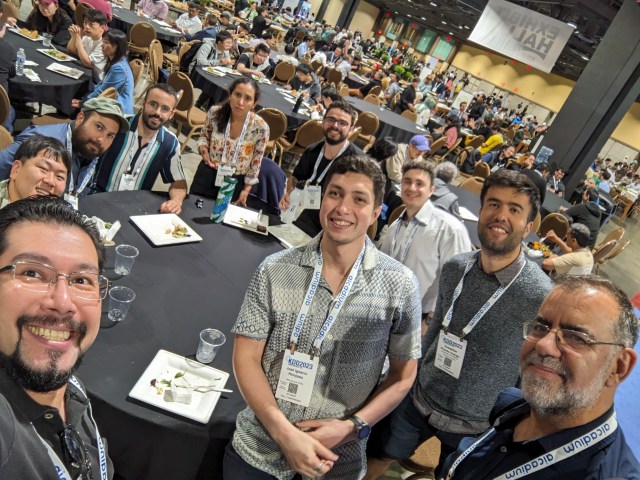The Association for the Advancement of Artificial Intelligence (AAAI) conference is recognized as an elite conference in the field of artificial intelligence (AI), gathering a community of academic and industry experts engaged in both theoretical and applied AI research. The 38th AAAI conference was held in the city of Vancouver, Canada, from February 20th to 27th. It offered an excellent opportunity for sharing research work in AI, bridging potential collaborations, and offering the guidance of the direction of AI innovation.
Both Cristian and Jet attended. Jet presented our latest research: “Breaking Barriers: Unveiling Gender Disparities in Corporate Board Career Paths using Deep Learning.” This research was showcased in two workshops: the AI in Finance for Social Impact, organized by J.P. Morgan, and the AI for Financial Services, highlighting the cross-disciplinary impact and relevance of our work. In the former, the lab was also represented in the work “Extreme climate events and credit risk: stress testing approach for loans to SMEs based on network analysis”, presented by the PhD candidate Camilla Carpinelli, part of the group led by Prof. María Óskarsdóttir, at Reykjavík University.
Celebrating Recognition: Best Poster Award
Our collective efforts were recognized with the Best Poster Award at the workshop, a moment of great pride and joy for our team. We extend our deepest gratitude for this honour to the organizers, reaffirming our commitment to contributing meaningful insights and solutions in the realm of AI and social impact in banking.
Networking, Collaboration, and Future Horizons
The AAAI conference provided an excellent opportunity for engagement with the community of AI in Finance. Our team had a great time to meet, network, and exchanging ideas with fellow researchers and practitioners from both academia and industry. Notable interactions included enlightening discussions with peers from prestigious institutions and companies such as CMU, J.P. Morgan, and Capital One, among others.
As we reflect on our experiences at the AAAI conference, we are filled with gratitude for the opportunity to contribute to and partake in the global dialogue on AI. We look forward to attending the next one in 2025!



















